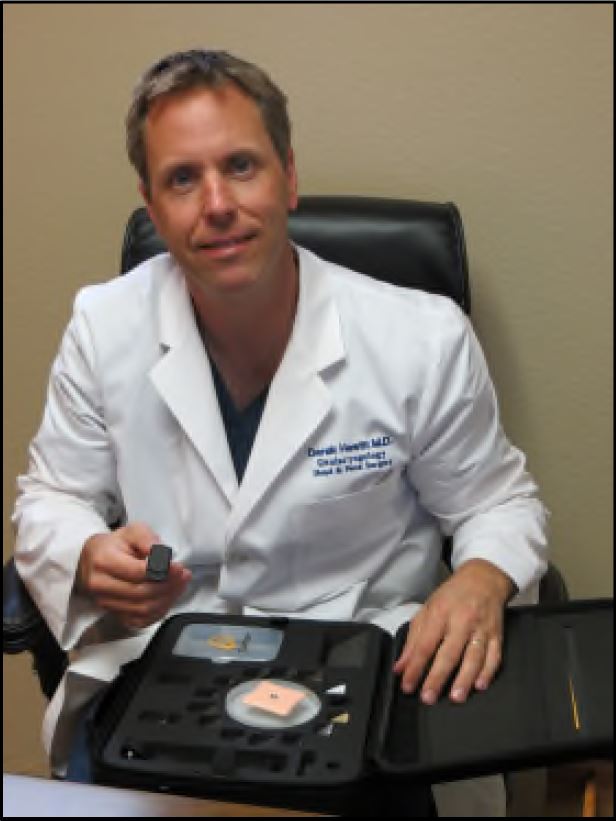by
Community Outreach and Philanthropy, (928) 771-5686, released August 6, 2013 | Aug 30, 2013
Two Quad Cities’ residents—a 16 year old and an 84 year old—were the first to undergo bone anchored hearing aid (BAHA) implants when the surgery was introduced recently at Yavapai Regional Medical Center (YRMC). “Single sided deafness, or S-S-D, affects people of all ages,” said Derek K. Hewitt, MD, MPH, Ear, Nose and Throat Surgeon at YRMC. “This kind of deafness doesn’t respond well to hearing aids, which are designed to amplify sound.”
 YRMC—the only hospital in western Yavapai County to offer BAHA implants—worked with Dr. Hewitt and Mark Strasser, MD, to prepare for the procedure’s introduction. BAHA implants have successfully restored hearing to people with SSD for decades.
YRMC—the only hospital in western Yavapai County to offer BAHA implants—worked with Dr. Hewitt and Mark Strasser, MD, to prepare for the procedure’s introduction. BAHA implants have successfully restored hearing to people with SSD for decades.
“Now that this procedure is available in our community, people can work with a local physician, undergo the procedure at YRMC and remain close to home for follow-up care,” said Jeannie Dew, RN, Director of Surgical Services, YRMC West in Prescott.
BAHA implants tap the body’s natural capacity to conduct sound. While conventional hearing aids amplify sound, the BAHA implant bypasses portions of the ear to send sound through the skull to the cochlea (inner ear) of the person’s normal hearing ear. The tiny hair cells inside the cochlea then change the sound vibrations into electrical impulses, which travel to the brain and allow the BAHA recipient to experience sound.
“The BAHA allows people to re-gain 360-degree sound awareness,” said Dew. “It’s like going from mono to stereo for people.”
During the approximately 30-minute procedure, Dr. Hewitt implants a titanium prosthesis with a small “abutment” into the patient’s skull, behind the ear. The abutment—which is just visible outside the skin—is covered with a healing cap that is removed a week after the surgery.
As required by the Food and Drug Administration (FDA), Dr. Hewitt waits three months after the procedure to place and activate the sound processor. The sound processor is snapped onto the abutment and transmits sound vibrations through the titanium abutment, then through the skull to the patient’s normal hearing ear. This allows the person to hear.
“It’s a great thing for these people to hear again,” Dr. Hewitt said.